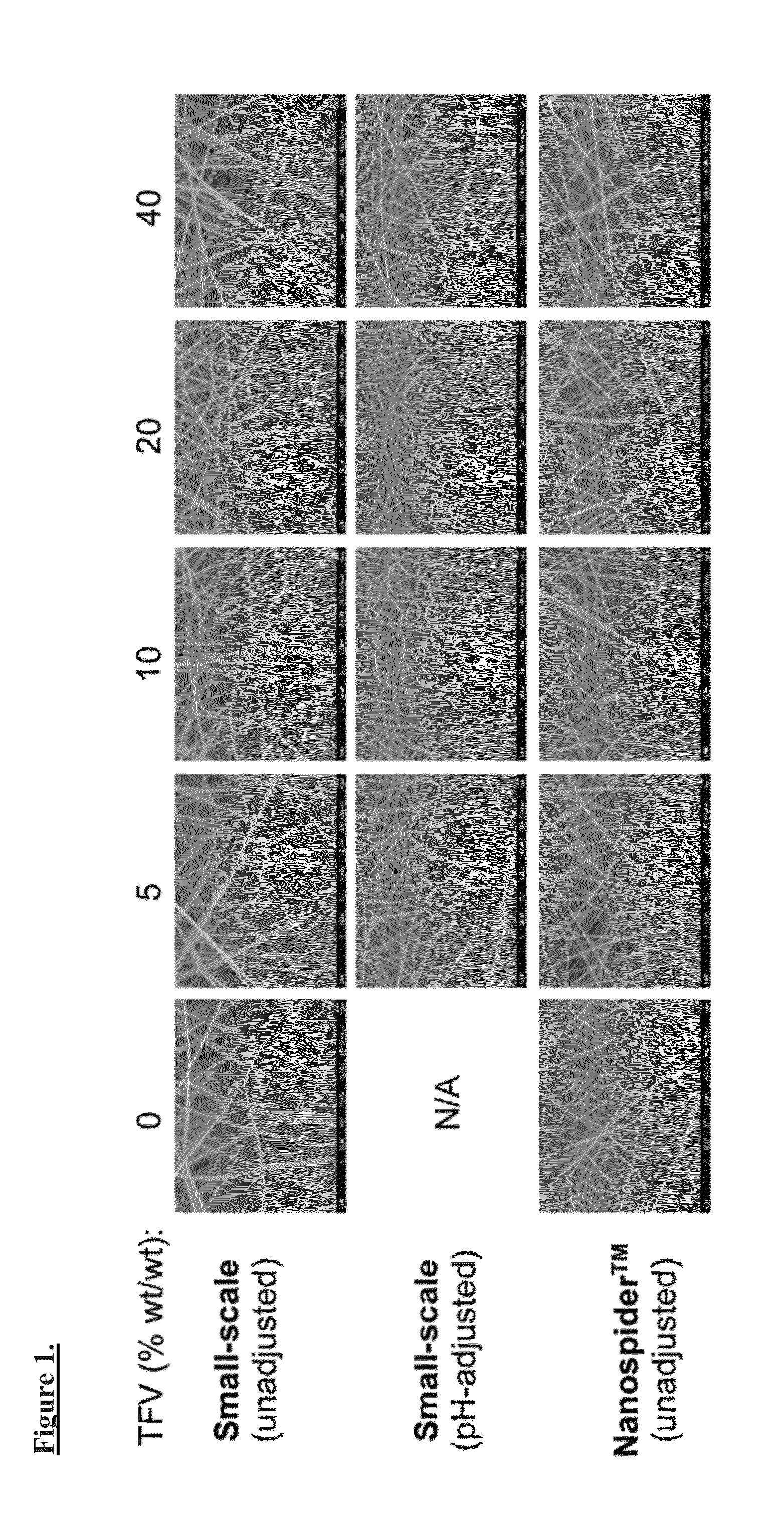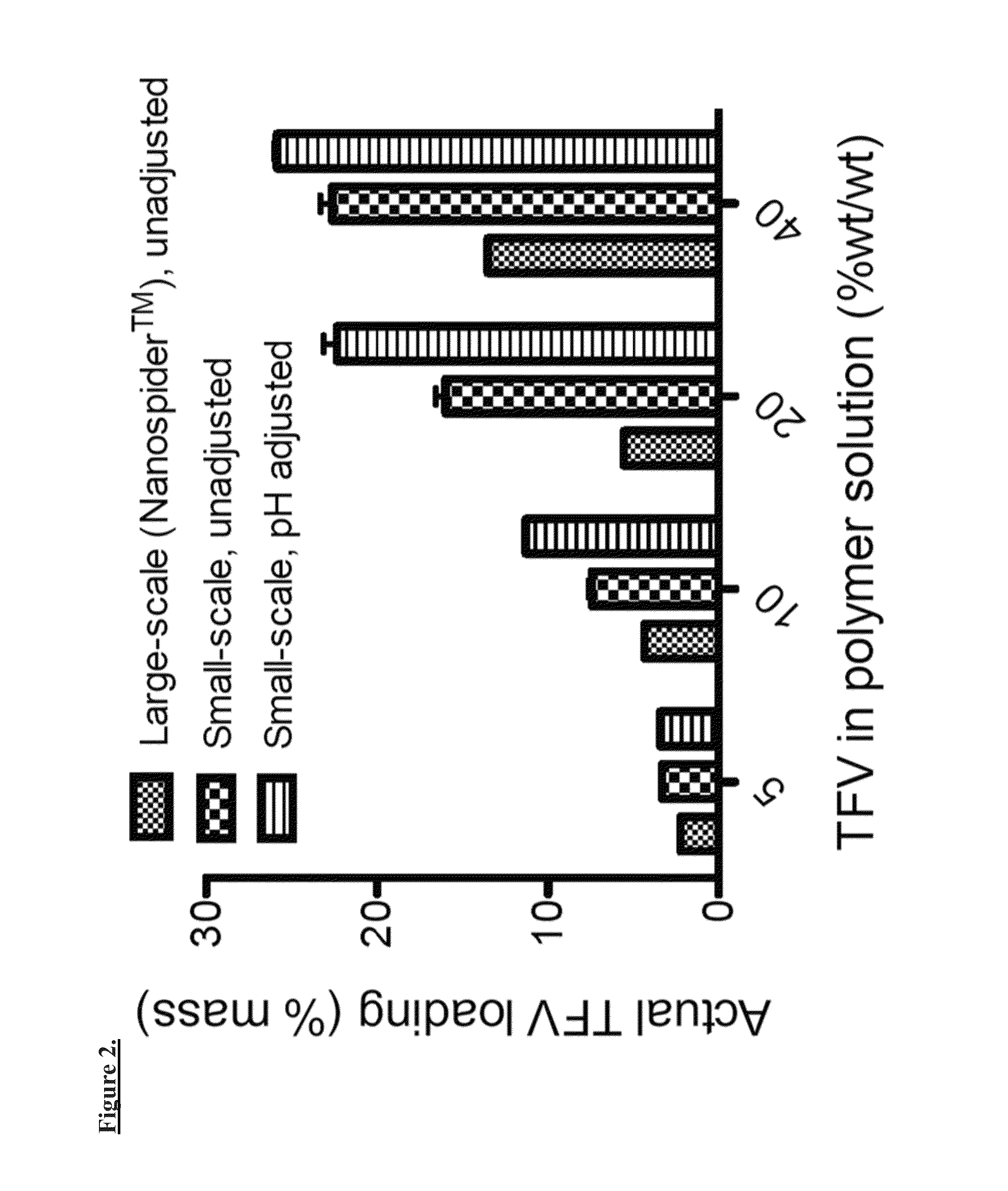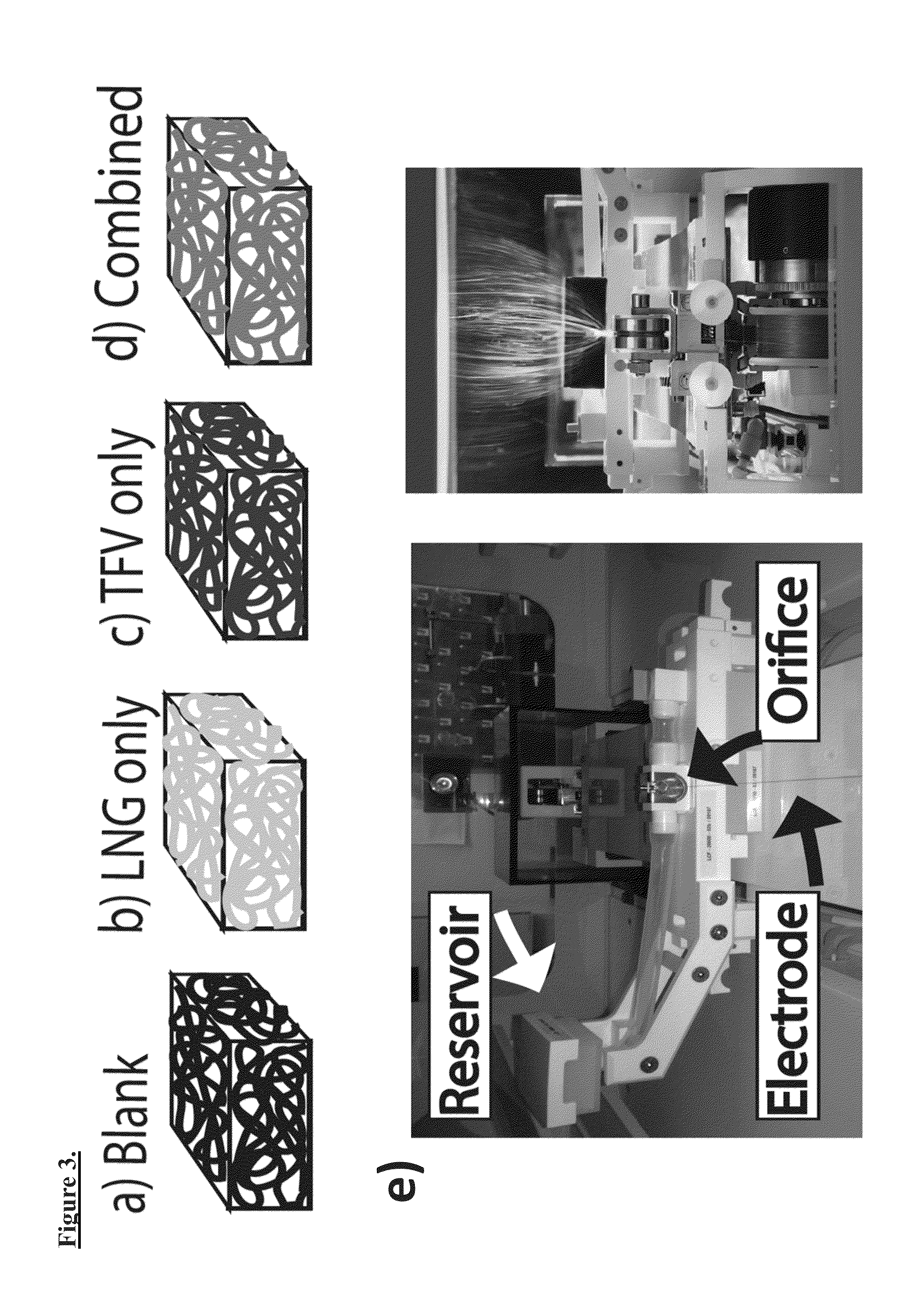Vaginal matrices: nanofibers for contraception and prevention of HIV infection
- Summary
- Abstract
- Description
- Claims
- Application Information
AI Technical Summary
Benefits of technology
Problems solved by technology
Method used
Image
Examples
example 1
Co-Delivery of Physicochemically Diverse Drugs
[0108]Generally, a bottleneck in the development of DDS, such as topical anti-HIV microbicides delivered in the vagina, is the need to integrate multiple design criteria into a single product. This includes a relative paucity of materials and fabrication process for delivery of drugs in physically constrained spaces, such as the vagina, other orifices, or inner organ spaces due limitations on size, geometry, and mechanical properties, in addition to the properties of the drug pharmacological agents that can be packaged for delivery. Existing topical drug agents, such as microbicides, can be adapted for use with electrospun fibers for novel topical fiber-based dosage forms.
[0109]Electrospinning is a powerful method to produce near 100% drug encapsulation of composite materials produced by simultaneous spinning of multiple solutions and / or layering of multiple types of electrospun fibers. Fiber-based topical DDS, including anti-retroviral ...
example 2
Electrospinning Parameters for PVA Solutions
[0111]The Inventors established a variety of electrospinning parameters for PVA solutions containing 0, 5, 10, 20, or 40% (wt / wt) TFV. Drug precipitate is observed in all pH-unadjusted TFV solutions. Given that TFV has a pKa ˜4, it is likely that by increasing the pH, one can increase drug solubility in the polymer solutions. The pH of each of the TFV-containing solutions can be adjusted from pH ˜3.3 to a final pH of 7.2-7.5 using 1 or 10 M NaOH, and solution conductivity is measured using a conductivity probe.
[0112]A small-scale set up consisting of a 30 kV voltage generator, syringe pump, and flat metal block as a grounded collector was applied. Variable parameters that were applied including adjustable flow rate (10-100 μL / min), voltage (15-20 kV), and distance to collector (9-21 cm). Observations of the formation of fiber meshes on the collector, the presence of a Taylor cone, and dripping solution are recorded for each set of paramete...
example 3
Physicochemically Diverse Drugs: TFV and LVN
[0117]Hydrophilic antiretroviral TFV, and hydrophobic LNG have significantly different physicochemical properties that ordinarily precludes their combination in current vaginal dosage forms. TFV is hydrophilic, with a logP of −1.6 and aqueous solubility of 1.87 g / L, while LNG is highly hydrophobic, with a logP of 2.8 and aqueous solubility of 1.42×10-3 g / L. PVA can be used as a polymer for drug loaded fibers as it is generally regarded as safe by the FDA, specifically including use in vaginal products. For the current study, the Inventors investigated the in vitro drug release and antiretroviral activity of the TFV and LNG combination in composite electrospun fabrics, including delivery of the two drugs from within the same fiber (combined fibers) or from separate fibers in a stacked or interwoven architecture. In addition, the Inventors investigated the role of fabric thickness on the kinetics of TFV and LNG release from stacked composite...
PUM
| Property | Measurement | Unit |
|---|---|---|
| Fraction | aaaaa | aaaaa |
| Weight | aaaaa | aaaaa |
| Hydrophobicity | aaaaa | aaaaa |
Abstract
Description
Claims
Application Information
 Login to View More
Login to View More - R&D
- Intellectual Property
- Life Sciences
- Materials
- Tech Scout
- Unparalleled Data Quality
- Higher Quality Content
- 60% Fewer Hallucinations
Browse by: Latest US Patents, China's latest patents, Technical Efficacy Thesaurus, Application Domain, Technology Topic, Popular Technical Reports.
© 2025 PatSnap. All rights reserved.Legal|Privacy policy|Modern Slavery Act Transparency Statement|Sitemap|About US| Contact US: help@patsnap.com



